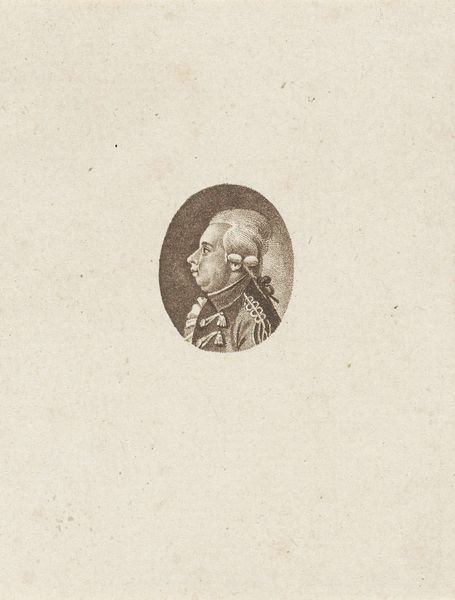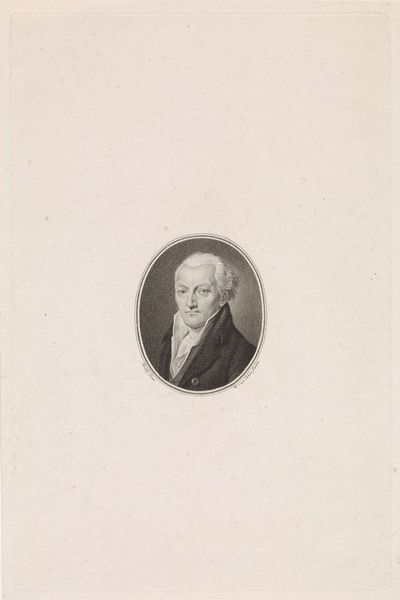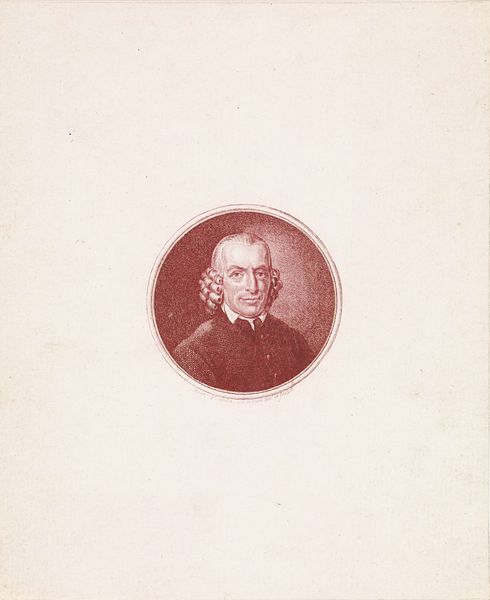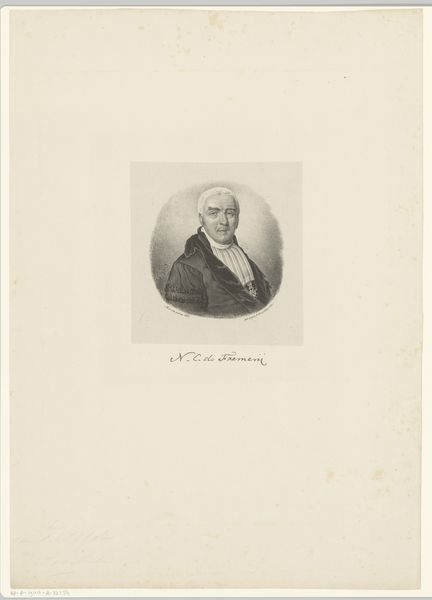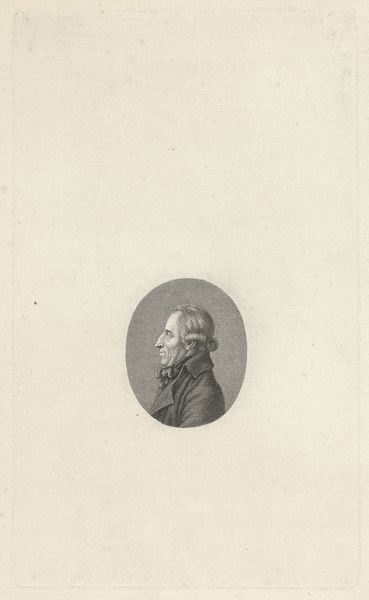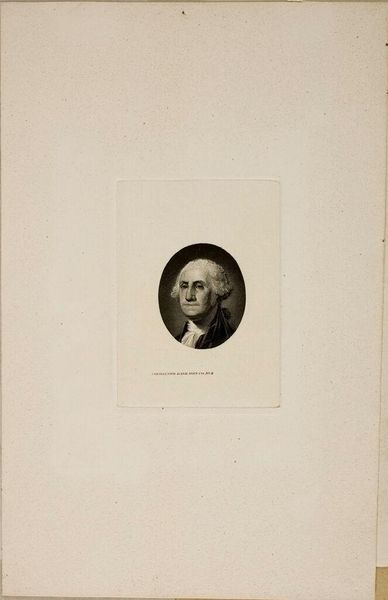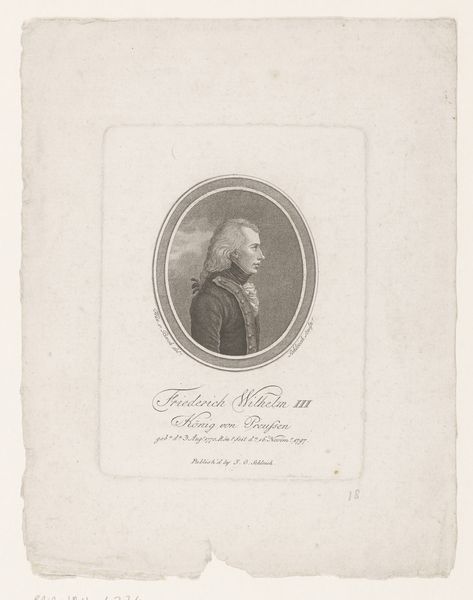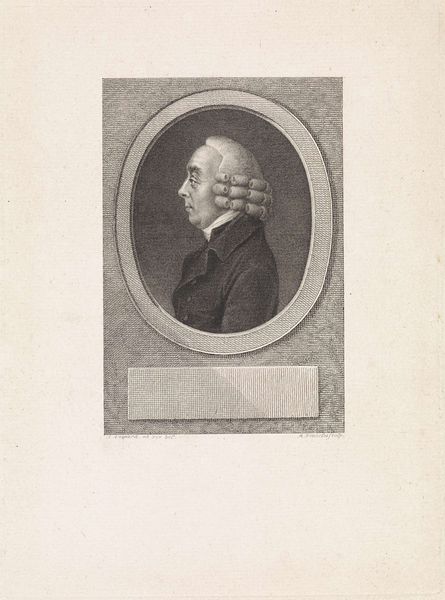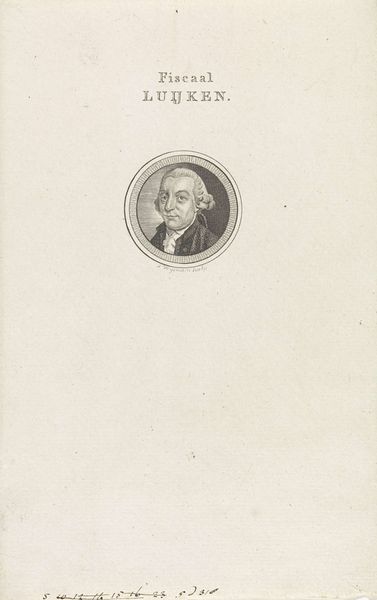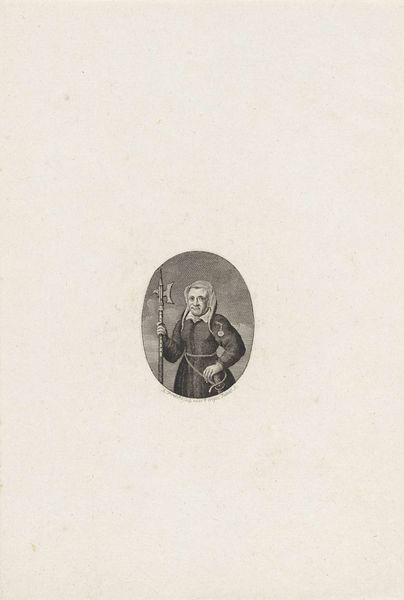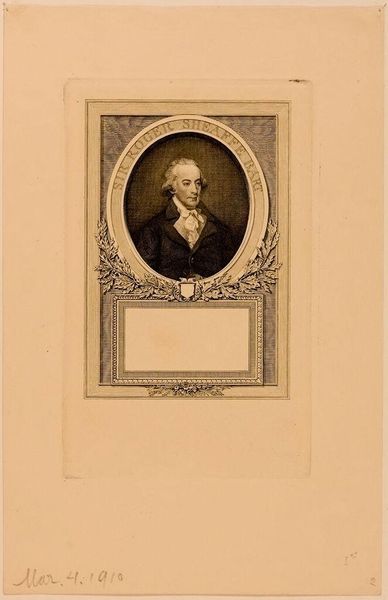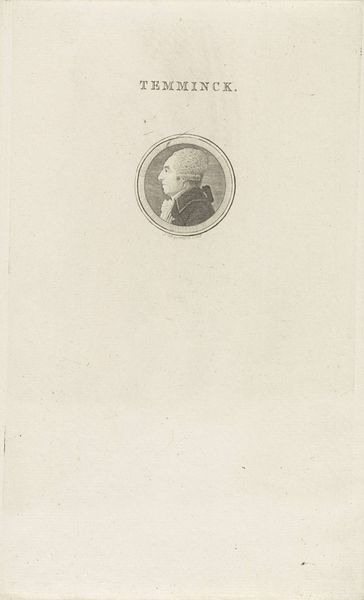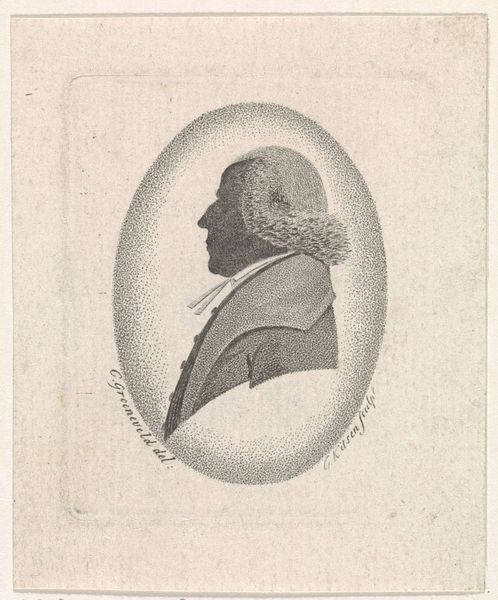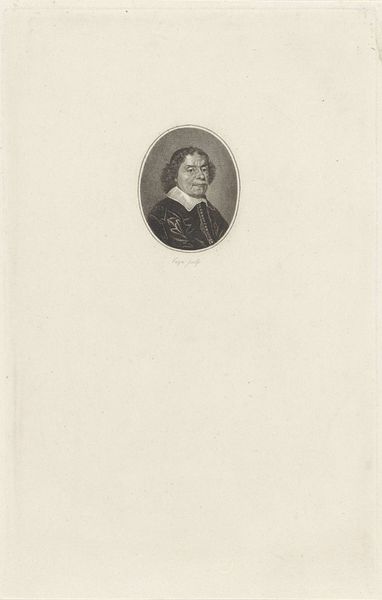
print, paper, engraving
#
portrait
#
neoclacissism
# print
#
paper
#
engraving
Dimensions: height 233 mm, width 138 mm
Copyright: Rijks Museum: Open Domain
Curator: Here we have "Portret van David van Gesscher," created in 1791 by Noach van der (II) Meer. It's an engraving on paper, currently held in the Rijksmuseum collection. My immediate impression is one of elegant restraint. Editor: Indeed, it's quiet. The circular frame isolates the sitter, compressing him into an almost cameo-like presence. The restricted tonal range adds to that sense of composed dignity, characteristic of the Neoclassical style. Curator: But within that frame, notice how much David van Gesscher embodies the Enlightenment ideal. The gaze is directed purposefully forward, embodying progress, rationality. There's a certain forward-thinking sensibility present here. The text above the portrait reminds us he was living and working in Amsterdam. Editor: I appreciate your point about his enlightened outlook, however, for me, the circle acts like a symbolic lens focusing on the silhouette. The spare line work delineates the man and is also emblematic of 18th-century modes of communication—an attempt to capture and convey essential characteristics in a reduced form. Curator: You've put your finger on something essential about portraiture itself. The subject’s posture, too, speaks volumes. Note how upright, how attentive he is, his clothing understated, emphasizing his intellect. It signifies the era's transition towards individual merit, and this is amplified by a focus on detail that conveys so much. Editor: It's fascinating how little colour is involved. It seems to enforce attention towards the subtle manipulation of line and light, establishing hierarchy within the piece. These stark contrasts define volume without unnecessary embellishments, true to its form and artistic conventions. Curator: What is significant about this piece is its enduring reminder of an important intellectual lineage in 18th century Amsterdam. What visual emblems did the sitter communicate? It would be a clue to the circles in which he was operating and thinking, helping later generations understand the continuity of enlightened cultural identity. Editor: Absolutely, this image provides access to the artistic trends and their visual grammar that articulated identity back then, distilled here in this engraving that now helps articulate the present and how we still draw links to past trends and thought.
Comments
No comments
Be the first to comment and join the conversation on the ultimate creative platform.
